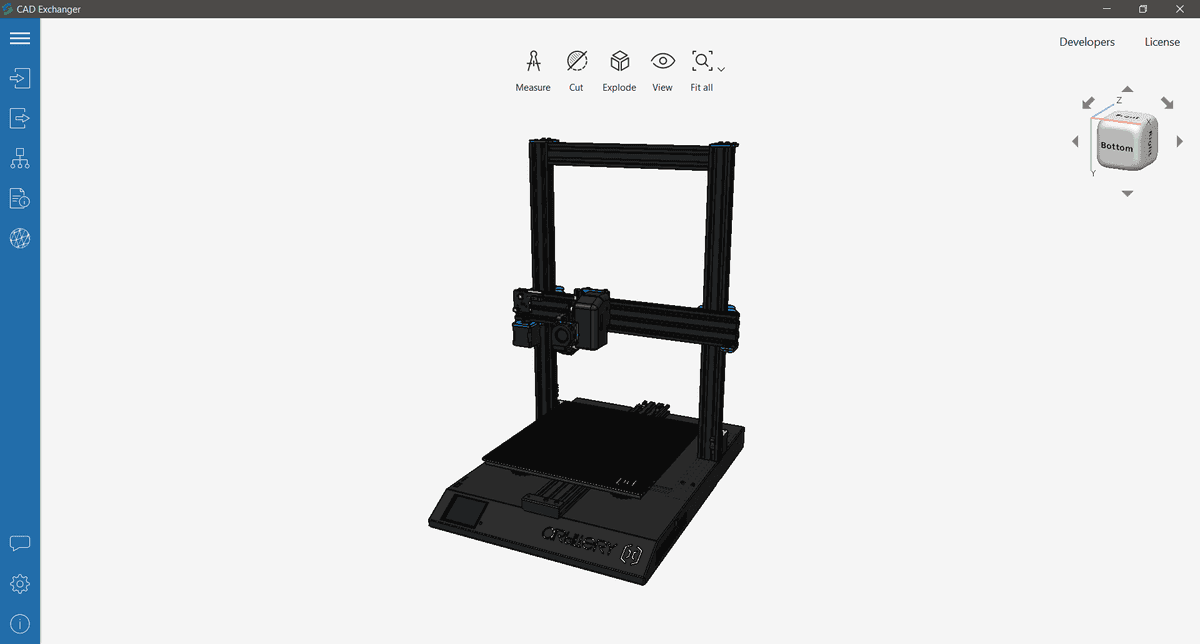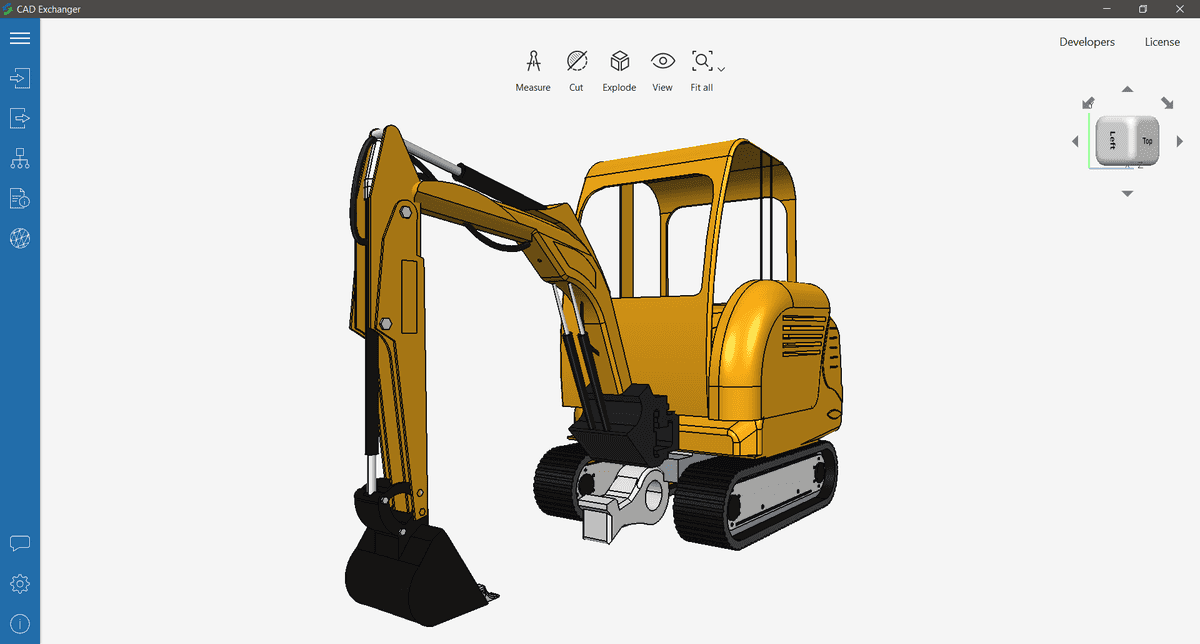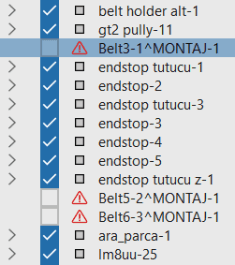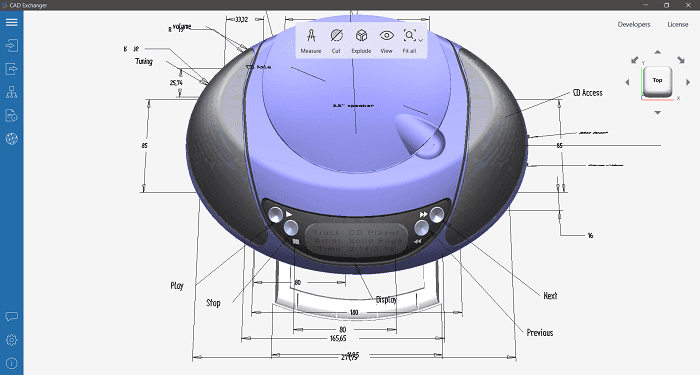Hey there!
This time we roll out a truly special release. Like everybody in this world, our team has been affected by the virus pandemic and government measures, so we had to change the usual working mode in favor of remote. However despite the hit, the team has been extremely agile to accommodate the changes, and neither release scope with HUGE exciting features nor the schedule has been negatively affected.
In 3.8.0 we added FOUR new file formats; Creo, NX, 3MF and DXF import. In addition to that, we made some improvements in SolidWorks, JT, STEP, IFC, Parasolid, ACIS and X3D.
PTC Creo, Siemens NX, 3MF and DXF
By introducing new formats we help our end-users work with a broader range of partners, suppliers and customers as CAD Exchanger allows them to speak more and more “CAD languages”. We constantly work on expansion of the supported file formats. We listen to our customers and their feedback influences the priority. So if your favorite format is not in the list yet do share your feedback below.
PTC Creo
PTC Pro/Engineer and then Creo have been strong players for decades with significant “digital footprint” as measured by the amount of native Creo files. Recent acquisition of OnShape by PTC will likely drive growth of Creo files used for data exchange in design workflows. So if you already deal with Creo files or anticipate this in the future, CAD Exchanger will likely be of help offering conversion from Creo to numerous CAD formats.
CAD Exchanger can read *.asm and *.prt files. Also, Creo has the specifics in saving the revision of the file into the extension, so Creo’s files may look like this: file_name.prt.1

Siemens NX
NX, one of the major CAD systems by Siemens is actively leveraged in automotive, aerospace and general MCAD environments. For NX users, CAD Exchanger had been providing support in the form of the JT format as the closest ally for years. With CAD Exchanger 3.8.0, we provide direct support of this native file format.
By default, NX saves files with *.prt extension which can contain both parts and assemblies.

3MF
3MF stands for 3D Manufacturing Format and was developed by the 3MF consortium as the most 3D printing-friendly file format. The main goal of the consortium is to develop the standard that meets modern world requirements. For example, STL, currently dominating the 3D printing domain, is the poorest CAD file format. It is basically ‘a soup of triangles’ without even any connectivity information, precise B-Rep geometries or even colors (unless you apply a special ‘hack‘ which will not be understood by most CAD readers). Other mesh formats (such OBJ or VRML) are most suited for visualization and have limited adoption in 3D printing. 3MF is aimed to serve the 3D printing industry and, by the way, is natively supported by Windows 10. That means in particular that everyone outside the CAD/CAM world, who might come across 3D files, will still be able to open them with Paint 3D and 3D viewer pre-installed in Windows 10.
3MF comes with a *.3mf extension.
DXF
Originally developed by Autodesk to enable interoperability of AutoCAD with other CAD software, DXF was used actively in the early days. Today it’s more common to use AutoCAD-native DWG, but there is still a lot of legacy DXF data out there. CAD Exchanger has been supporting DXF export since 2019. With version 3.8.0 we introduce DXF import. As of now, users will be able to import mesh models from DXF. Future releases will add support for precise B-Rep geometries.
DXF files use a *.dxf extension.
SolidWorks: Viewing polygonal representations

Several file formats (e.g. STEP, JT or SolidWorks) use external references to better work with massive assemblies. This is useful when you have to provide a fraction of a whole assembly for a particular manufacturer without disclosing the whole assembly.
If you can shatter the assembly and store part files in individual files, then there is a chance that those files will be forgotten when sending the assembly files. By default, SolidWorks assemblies (*.sldasm files) carry polygonal (mesh) representations of external parts (*.sldprt files).This allows to display an assembly even if its components (stored in external files) are missing when reading that assembly. CAD Exchanger will warn about unresolved external references but will now be able to display the whole assembly anyway.
It is important to understand that mesh representation is there just to provide a view of the assembly. You won’t be able to edit the part or effectively convert into some precise geometry format (such as ACIS) until you resolve the missing reference by providing all required .sldprt files.
CAD Exchanger is now able to display the meshes of the missing parts and will highlight them in the product structure.
JT: export of semantic PMI and PMI associations
JT is one of a few versatile file formats that can carry B-Rep, and mesh representations, meta-data and PMI (Product and Manufacturing Information). In earlier releases, we step-by-step introduced support of graphical and semantic PMI. With 3.8.0 release, we add the ability to export semantic PMI and PMI associations (interconnections between PMI and B-Rep faces and edges).

STEP, IFC, ACIS, Parasolid, X3D
Each CAD Exchanger release adds multiple bug fixes and enhancements in existing formats. CAD Exchanger is used by hundreds of thousands of users worldwide and we regularly receive reports when some particular user’s file is not read as intended. Very often the root-cause is an issue of a sending system but sometimes it is a very corner case we never encountered and could not imagine. In either case we try to add improvements to make CAD Exchanger more robust and faster. The release 3.8.0 is no exception, so enjoy improvements in all key supported formats. Many improvements will be delivered in future versions, so please make sure to stay tuned with our releases!